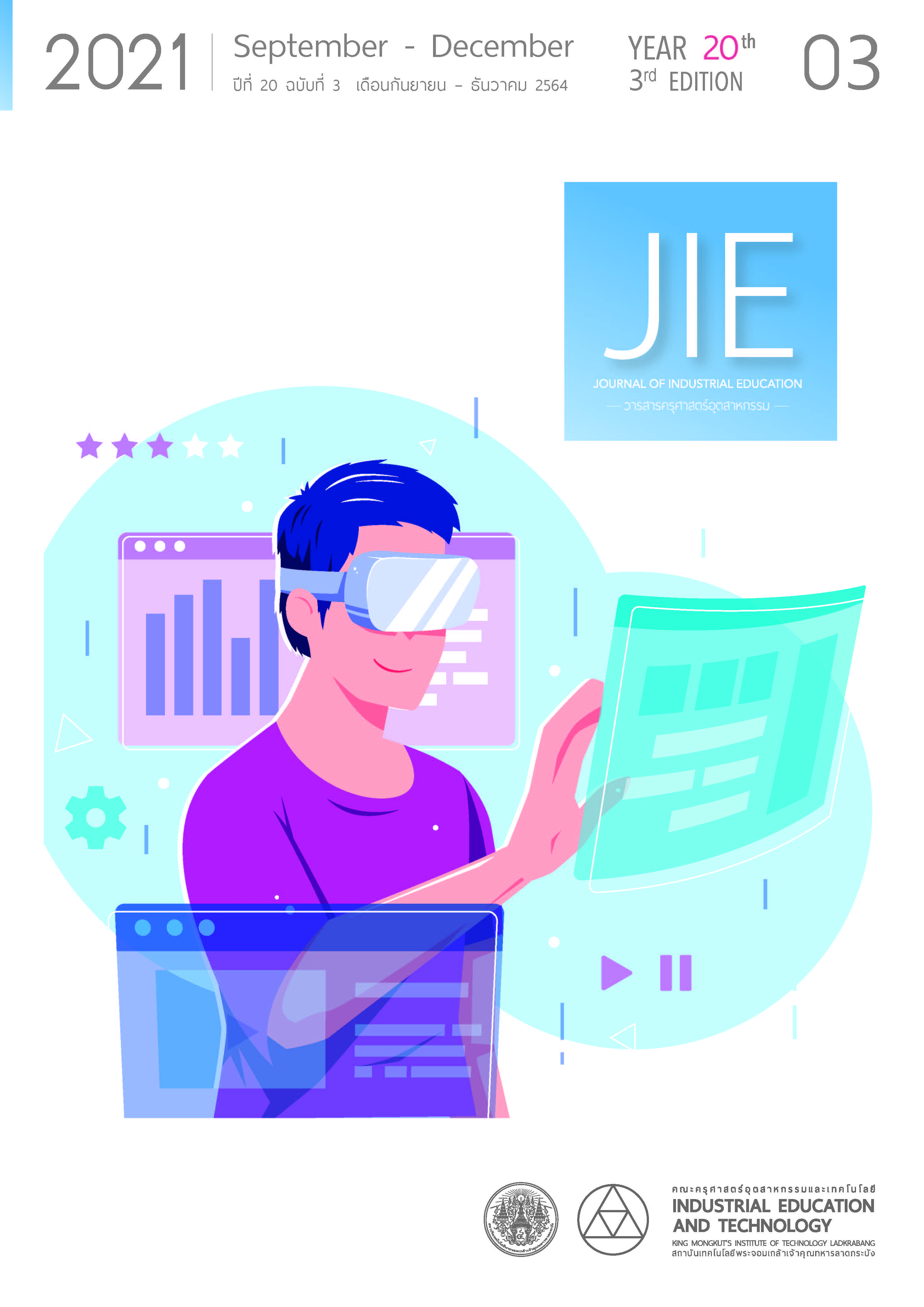THE DEVERLOPMENT OF COMPUTER-ASSISTED INSTRUCTION: COMPUTER-AIDED DRAWING SUBJECT ON 3D IMAGE CREATION WITCH TOOLS IN SOLIDWORKS SOFTWARE
Keywords:
Keywords: computer-assisting instruction; 3D images; Tools in Solid WorksAbstract
The research aimed to 1) develop the computer-assisted instruction: computer-aided drawing subject on 3D image creation with tools in SolidWorks software and finding out efficiency according to the criteria of 80/80, 2) study the effectiveness of Computer-Assisted Instruction: Computer-Aided Drawing Subject on creation with tools in SolidWorks software, and 3) study on the students’ satisfaction of the computer-assisted instruction: computer-aided drawing subject on 3D Image creation with tools in SolidWorks software. The sample was using 36 mechanical engineering students who enrolled in computer-aided drawing in the first semester academic year 2020, Rangsit University. The sampling technique was the purposive sampling as the subjects of the study. The instruments of this study were: 1) The computer-assisted instruction: computer-aided drawing subject on 3D image creation with tools in SolidWorks software, 2) Pre and post learning achievement test, and 3) The questionnaire of the students’ satisfaction towards the computer-assisted instruction lesson. Data were statistically analyzed by mean, standard deviation, and t-test dependent.
The results from the experiment are shown as follows: 1) The efficiency of the computer-assisted instruction is 81.62/86.28, 2) Students’ learning achievement scores after using the computer-assisted instruction are higher than those before using at the statistically significant value of .05, and 3) The students’ satisfaction is at the high level.
References
Office of The National Economic and Social Development Council (NESDC). (2012). The twelfth national economic and social development plan (2012-2016). Bangkok: prime minister's office. 2. (in Thai)
The national strategy act B. E. 2560. (2017). The royal gazette. 92nd ed. Bangkok: prime minister's office. 14. (in Thai)
Simmatun, P. (2008). “A development of instructional model using collaborative learning on computer network based learning for undergraduate student based on constructivist theory.” Proceeding of International e-learning conference 2008, Bangkok, Thailand. (in Thai)
Teantong, M. (2001). Courseware design and development for CAI. 2nd ed. Bangkok: King Mongkut's institute of technology north Bangkok textbook publishing center. 12. (in Thai)
Paksaichon, A. (2007). “The Development of Computer Assisted Instruction to Support Studying Biomechanics 1 in Manual Muscle Testing and Range of Motion for the First Year Physical Therapy Students in 2004. ” Journal of Rangsit University: Teaching & Learning. 1(2), 24-35. (in Thai)
Brahmawong, C. (2013). “Developmental testing of media and instructionalpackage.” Silpakorn education research journal. 5(1), 7-20. (in Thai)
Hua, H. T., Liu, Y. C., & Chang, H. C. (2012). “Learning achievement in solving word-based mathematical questions through a computer-assisted learning system.” Educational technology & society. 15(1), 248-259.
Inkart, S. (2009). Introduction to research in educational technology. Bangkok: Ramkhamhaeng University Press. 34. (in Thai)
Sresaard, B. (2017). Basic research. 10th ed. Bangkok: Suviriyasan. 56-68. (in Thai)
Taweerat, P. (1999). Applied behavioral science research. 8th ed. Chulalongkorn University Printing House, Bangkok: Chulalongkorn University. 117. (in Thai)
Sikkabandit, S. (1994). Educational technology. Bangkok: King Mongkut's Institute of Technology North Bangkok. 217–218. (in Thai)
Chainuch, A. (2010). “Web-based tutoring on mobile telephone system at vocational.” Master’s thesis, King Mongkut's Institute of Technology Ladkrabang, 41-44. (in Thai)
Boonpa, S. (2002). “A development of online computer assisted instruction via Internet on principle of programming.” Master’s Thesis, King Mongkut's University of Technology North Bangkok, 45-52. (in Thai)
Sakkavanich, T. (2007). “A development of Interactive e-Learning through the internet in programming course of Ratjapat Chandrakasem University.” Information Technology Journal. 2(5), 43-51. (in Thai)
Yuen, A. H. K. (2006). “Learning to program through interactive simulation.”Educational media international. 43(3), 251-268.
Tanya, N., & Jaturanon, W. (2008). “The development of electronic-online science lessons using high/scope instructional activities for level 3 students at Benjamarachalai school under the Royal Patronage of the King.” Journal of education and social development. 4(2), 77-88. (in Thai)
Erbsree, T. (2005). “The study of math progress with a fundamental practicing module and additional exercises via computer-assisted instruction: a case study of engineering undergraduate students, College of Industrial Technology.” The Journal of Industrial Technology. 1(1), 46-51. (in Thai)
Downloads
Published
How to Cite
Issue
Section
License
Copyright (c) 2021 Journal of Industrial Education

This work is licensed under a Creative Commons Attribution-NonCommercial-NoDerivatives 4.0 International License.
"The opinions and contents including the words in papers are responsibility by the authors."
"ข้อคิดเห็น เนื้อหา รวมทั้งการใช้ภาษาในบทความถือเป็นความรับผิดชอบของผู้เขียน"



